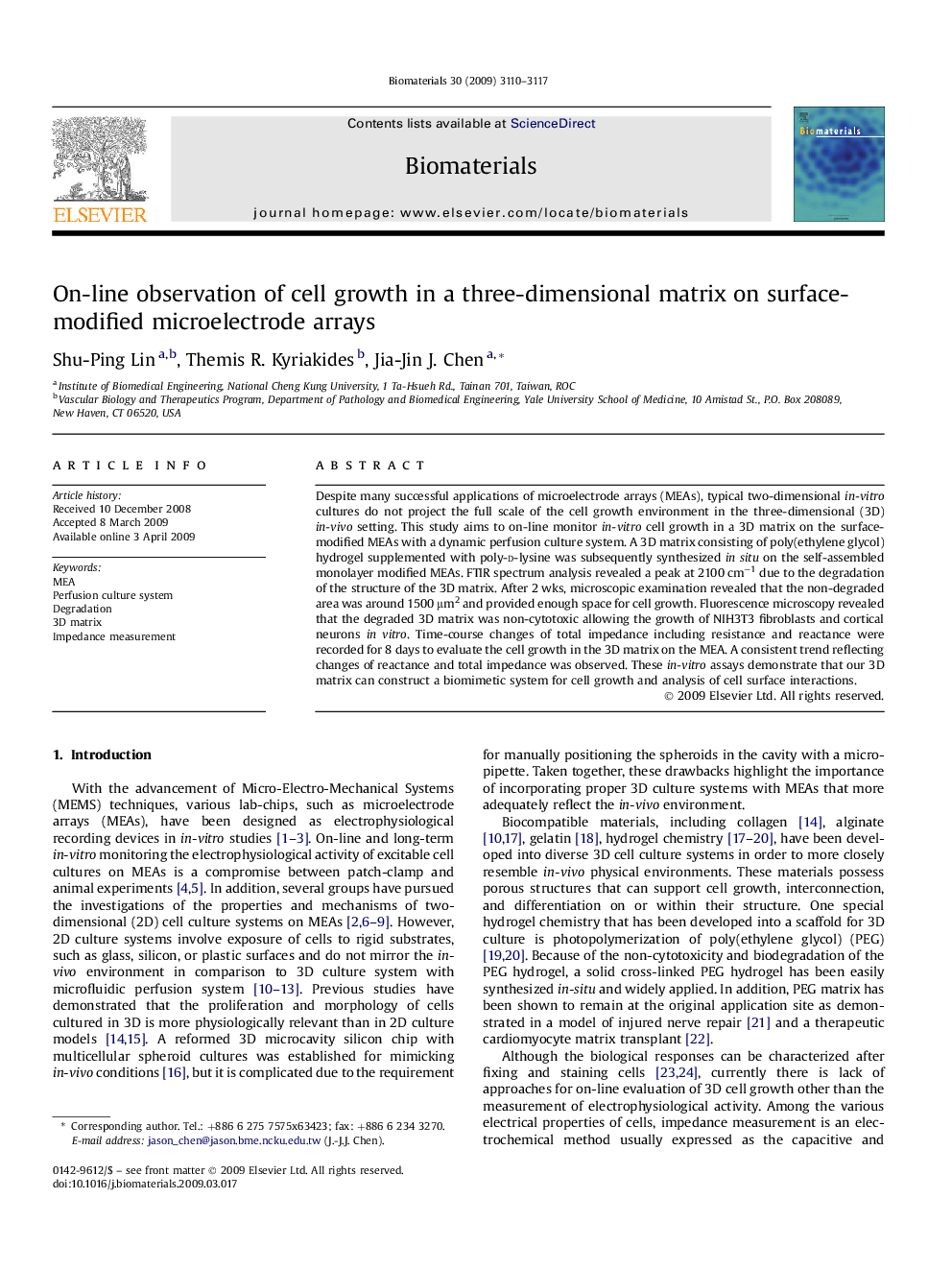| Article ID | Journal | Published Year | Pages | File Type |
|---|---|---|---|---|
| 10230020 | Biomaterials | 2009 | 8 Pages |
Abstract
Despite many successful applications of microelectrode arrays (MEAs), typical two-dimensional in-vitro cultures do not project the full scale of the cell growth environment in the three-dimensional (3D) in-vivo setting. This study aims to on-line monitor in-vitro cell growth in a 3D matrix on the surface-modified MEAs with a dynamic perfusion culture system. A 3D matrix consisting of poly(ethylene glycol) hydrogel supplemented with poly-d-lysine was subsequently synthesized in situ on the self-assembled monolayer modified MEAs. FTIR spectrum analysis revealed a peak at 2100 cmâ1 due to the degradation of the structure of the 3D matrix. After 2 wks, microscopic examination revealed that the non-degraded area was around 1500 μm2 and provided enough space for cell growth. Fluorescence microscopy revealed that the degraded 3D matrix was non-cytotoxic allowing the growth of NIH3T3 fibroblasts and cortical neurons in vitro. Time-course changes of total impedance including resistance and reactance were recorded for 8 days to evaluate the cell growth in the 3D matrix on the MEA. A consistent trend reflecting changes of reactance and total impedance was observed. These in-vitro assays demonstrate that our 3D matrix can construct a biomimetic system for cell growth and analysis of cell surface interactions.
Related Topics
Physical Sciences and Engineering
Chemical Engineering
Bioengineering
Authors
Shu-Ping Lin, Themis R. Kyriakides, Jia-Jin J. Chen,
